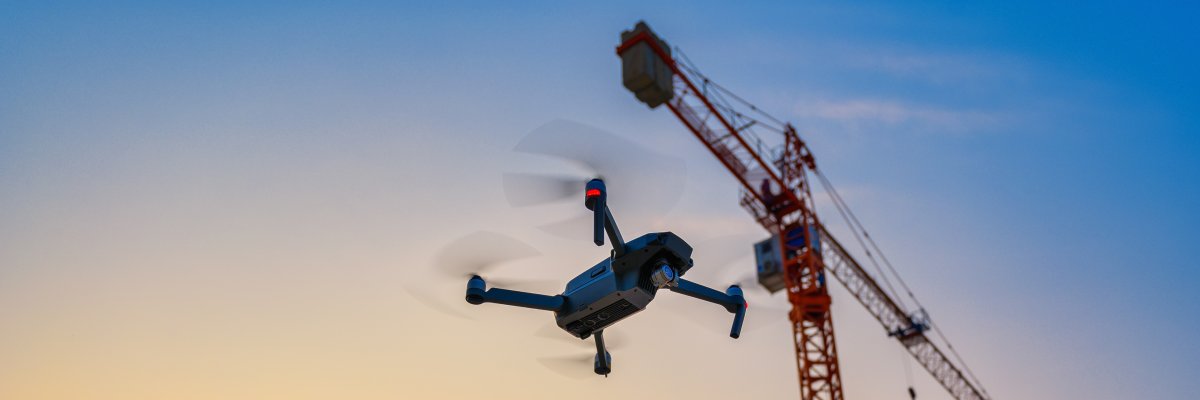Use Cases for the use of drones
Drones have the potential to make our lives easier and to create a tangible benefit for users and the general public. Many unmanned aviation projects are currently in preparation, are already being implemented or have been completed, providing valuable findings for future developments. The following examples represent a small selection from the variety of use cases and are intended to show the variability and diversity of drone technology, which is used for instance in the agricultural and medical sectors as well as for film production and photography.
Drones used for medical purposes
In the course of medical operations, such as the removal of tumours, tissue samples known as frozen sections are taken from the patients. These samples have to examined by a pathological laboratory – while the operation is still ongoing. As a rule, several frozen sections are taken, the tissue samples are individually packaged and taken to the pathology department to be analysed there. However, not every hospital has a pathology department. Within the framework of a joint project by the Hamburg Authority for Economy, Transport and Innovation, the Armed Forces Hospital and the Kath. Marienkrankenhaus gGmbH, Lufthansa Technik AG, the SMEs ZAL Zentrum für Angewandte Luftfahrtforschung and GLVI Gesellschaft für Luftverkehrsinformatik mbH as well as FlyNex GmbH, drones carried samples by air to the laboratory, thus clearly reducing the transport times.
Drones used for agricultural purposes
In Germany, fawns are frequently killed by agricultural mowers. Since the classical precautionary measures such as walking surveys of the meadow before mowing is time- and personnel-intensive, drones are increasingly used to save the fawns. In early 2019, for example, the Rehrettung Hegau-Bodensee e.V. (deer saving association) and the Dornsberg Hunting School of the federal state of Baden-Württemberg, together with the training partner nicopter GmbH, started to systematically and regularly train hunters and other interested persons on how to save deer. This was done within the context of workshops on the use of drones. Moreover, drones can be used to check fields’ nutrient and water supply as well as to supply them with nutrients by air.
Drones used for surveying purposes
Aerial surveying by means of photogrammetry or laser scanners enables the high-precision mapping and modelling of large areas and buildings within a short period of time. The data is then used for scale-based location plans and terrain models, for mass calculation or for 3D models. In addition to saving costs and time, the use of drones increases safety for employees and non-involved persons, as it is no longer necessary to enter the areas and objects to be inspected. For example, motorways and railway lines can be safely surveyed from the air without having to be closed – which in turn reduces the risk of congestion and accidents for transport users but also increases the safety of the survey personnel. For instance, STRABAG AG is already using such procedures.
Drones used for weather forecasting
In Germany, extreme weather events often have devastating consequences. In the majority of cases, these storms occur unexpectedly for the population, because existing weather models cannot reliably predict phenomena such as fog and thunderstorms due to the lack of measurement data. The reasons for this are, on the one hand, that these weather phenomena are highly influenced by local conditions and, on the other hand, that little or no weather data is collected in the lower air strata in particular (up to an altitude of about 3 km). Meteomatics founder Dr Martin Fengler developed a solution to this problem while pursuing his hobby of flying. He often did not know in the morning whether the weather conditions would allow him to fly in the afternoon. The difficulty of forecasting fog gave rise to the idea of developing the Meteodrone, as the Meteomatics weather drone is called. The drone is approved for flights outside the visual line of sight and at an altitude of up to 3,000 metres.
A detailed description of these and many other use cases can be found in the brochure entitled ...with drones. Unmanned flying at the service of man, nature and society (German only), published by the Federal Ministry for Economic Affairs and Climate Action.
An overview of all drone-related projects funded by the Federal Ministry of Digital Affairs and Transport is provided online (German only).
Drones in civil protection
Drones are already available to many authorities and organisations with security tasks (BOS) for command support. They are also becoming increasingly important in civil protection, as they offer considerable advantages over other means and methods, for example in situational awareness. Further information is available from the Federal Office of Civil Protection and Disaster Assistance (German only).
